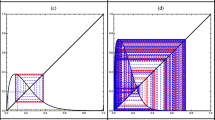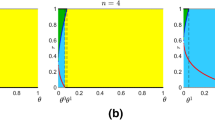Abstract
In this paper, we analyse the company behaviour in duopoly taking into account the most common strategies, including dominant, reactive, cooperative and tit-for-tat strategies, since they account for most of the decisions made by companies. Dominant, reactive and cooperative strategies may lead to different outcomes, such as Stackelberg, Cournot, Cartel, Cartel with one cheater and Perfect competition equilibria, while the tit-for-tat strategy may lead to Cartel, Cournot or Perfect competition equilibria due to its retribution nature. However, we argue that these outcomes are mainly valid in the short-run since in the long-run the companies learn and adapt to the behavioural pattern of their peer, which leads them to evolve to a new way of thinking and strategic planning taking into account the long-run effects. Due to the long-term perspective, the outcome of the implementation of various strategies in duopoly may not be efficiently solved using simple game theory analysis. For that purpose, we propose the utilization of more complex analysis, an evolutionary game theory, which is based on the adaption of the company to the behaviour of other players in a duopoly. When the probability of choices is applied, new fitness equations are obtained which show the changing tendencies towards the companies’ strategies that ensure payoffs above the average, in the long run, using a replicator dynamics concept. We analyse several scenarios, in which players choose among two, three or four strategies. Our results indicate that the long-run equilibrium and preferred options are significantly altered depending on the starting set of strategies.










Similar content being viewed by others
References
Barron EN (2013) Game Theory: an Introduction. Wiley, Hoboken
Ding Y, Gao X, Huang C, Shu J, Yang D (2018) Service competition in an online duopoly market. Omega 77:58–72
Eigruber M, Wirl F (2019) Cheating as a dynamic marketing strategy in monopoly, cartel and duopoly. CEJOR 28:461–478
Elsadany AA (2015) A dynamic Cournot duopoly model with different strategies. J. Egypt. Math. Soc. 23(1):56–61
Elsadany AA (2017) Dynamics of a Cournot duopoly game with bounded rationality based on relative profit maximization. Appl. Math. Comput. 294:253–263
Fonseca MA, Müller W, Normann H (2006) Endogenous timing in duopoly: experimental evidence. Int. J. Game Theory 34:443–456
Gori L, Sodini M (2017) Price competition in a nonlinear differentiated duopoly. Chaos Solitons Fractals 104:557–567
Haurie A, Krawczyk JB, Zaccour G (2012) Games and Dynamic Games. HEC Montréal, Montréal
Huang H, Ke H, Wang L (2016) Equilibrium analysis of pricing competition and cooperation in supply chain with one common manufacturer and duopoly retailers. Int J Prod Econ 178:12–21
Jehle GA, Reny PJ (2011) Advanced Microeconomics Theory, 3rd edn. Pearson, USA
Kopal R, Korkut D (2014) Uvod u teoriju igara. Effectus, Zagreb
Peng Y, Lu Q, Xiao Y (2016) A dynamic Stackelberg duopoly model with different strategies. Chaos Solitons Fractals 851:128–134
Roca CP, Cuesta JA, Sánchez A (2009) Evolutionary game theory: temporal and spatial effects beyond replicator dynamics. Phys. Life Rev. 6:208–249
Sánchez Carrera EJ, Pavlinović S (2013) Evolution of the place attachment: an economic approach. Croatian Oper. Res. Rev. 4:109–119
Schaffer ME (1989) Are profit maximizers the best survivors? J. Econ. Behav. Organ. 12:29–45
Schecter S, Gintis H (2016) An Introduction to Classical and Evolutionary Models. Princeton University Press, Princeton
Silveira D, Vasconcelos S (2020) Essays on duopoly competition with asymmetric firms: Is profit maximization always an evolutionary stable strategy? Int. J. Prod. Econ. 225:107592
Simaan T, Takayama T (1978) Game theory applied to dynamic duopoly problems with production constraints. Automatica 14:161–166
Simon CP, Blume L (1994) Mathematics for Economists. Norton&Co, New York
Author information
Authors and Affiliations
Corresponding author
Additional information
Publisher's Note
Springer Nature remains neutral with regard to jurisdictional claims in published maps and institutional affiliations.
Rights and permissions
About this article
Cite this article
Vrankić, I., Herceg, T. & Pejić Bach, M. Dynamics and stability of evolutionary optimal strategies in duopoly. Cent Eur J Oper Res 29, 1001–1019 (2021). https://doi.org/10.1007/s10100-020-00713-6
Accepted:
Published:
Issue Date:
DOI: https://doi.org/10.1007/s10100-020-00713-6




